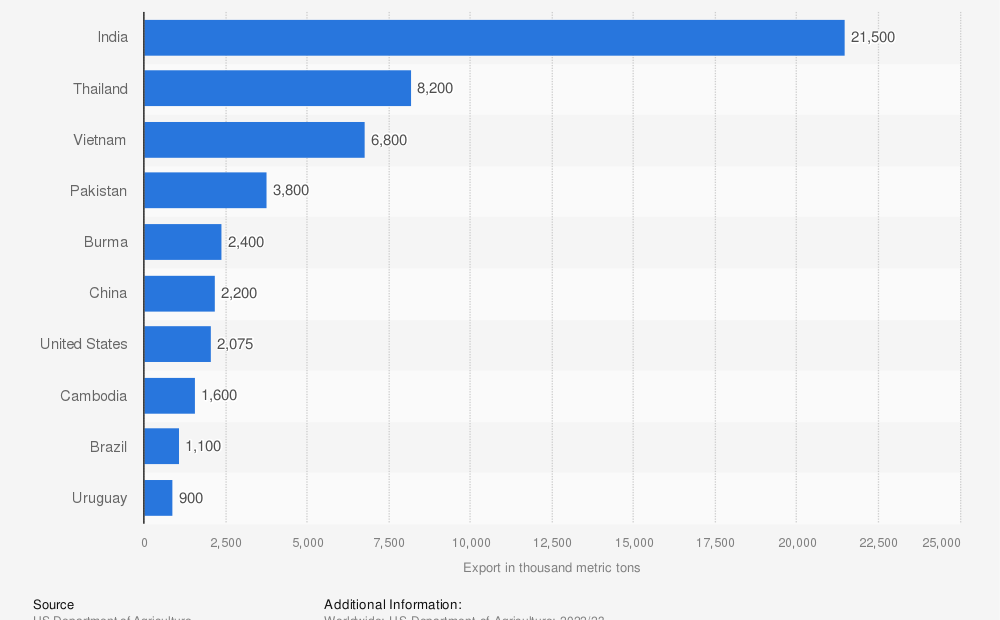No products in the basket.
India’s decision to ban exports of rice has caused shock waves in the Asian market, leading to a 10% increase in prices, the highest in 15 years.
Key Takeaways
- Rising rice prices and potential inflationary pressures are a major concern for consumers and governments in Asia, particularly for vulnerable populations who rely heavily on rice as a staple food.
- India’s ban on rice exports has caused a 10% price increase, the highest in 15 years, leading to concerns about inflation and supply shortages in the Asian market.
- The region, responsible for 90% of global rice production and consumption, is severely affected by the supply crunch due to the disruption caused by India’s embargo, especially in Thailand.
- Climate change, including the El Nino weather pattern and extreme weather events, is further impacting rice supply, potentially resulting in high prices in the future and raising fears of inflation and price volatility for consumers.
Rice production is facing a major shortage due to climate-related factors such as floods, droughts, and severe weather. This puts food security and livelihoods at risk as prices rise. Demand for rice is increasing as populations grow, but the water-intensive nature of rice cultivation makes it vulnerable to droughts caused by climate change.

Climate change is also impacting rice supply, with the El Nino weather pattern and extreme weather events affecting harvests. The increase in rice demand and limited investment in rice production could lead to high prices in the future. This situation has raised fears of inflation and price volatility for consumers.
Inflation and supply shortages risk in the region
This has led to concerns about inflation and supply shortages in the region, which produces and consumes 90% of the global supply of rice. The supply crunch is severe because the Indian embargo disrupted rice markets across the region, with Thailand being particularly affected.
Thailand, being the world’s second-largest rice exporter, experienced a significant increase in domestic milled rice prices by almost 20% within a week after India’s announcement. As a result, the prices have reached 21,000 baht ($597) per tonne, while export have touched an 11-year high.
Pakistan’s rice crop has also been severely affected by flooding in recent years. The International Centre for Integrated Mountain Development and the Pakistan Agricultural Research Council have estimated that almost 80% of the rice crop in a region that produces almost half of the country’s rice has been damaged. This has had significant implications for Pakistan and the global market, as it is the world’s fourth-largest rice exporter.
Global rice inventories are at a six-year low, and the weather phenomenon El Niño could further impact rice production in Asia. Unlike other grains, rice is predominantly consumed by humans, leaving less room for price reductions to affect demand. The ban on rice exports may lead to higher global food prices and put strain on vulnerable economies like Bangladesh and Indonesia that heavily rely on Indian rice imports.
Discover more from Thailand Business News
Subscribe to get the latest posts sent to your email.














You must be logged in to post a comment.